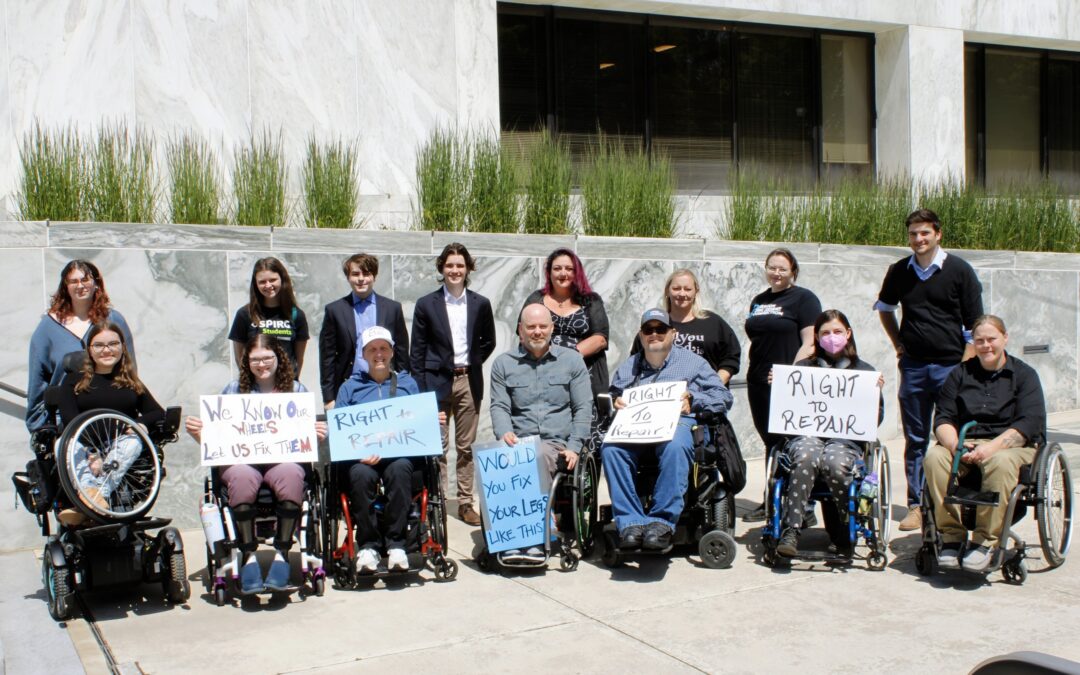The momentum is clear: people who use wheelchairs are getting more control over maintaining their mobility. On Monday June 9, 2025, Tina Kotek, Governor of Oregon, signed Senate Bill 550 (SB 550) into law, officially expanding the state’s “right to repair” framework to include wheelchairs and complex rehabilitation technology.
The problem they were fixing
While Oregon had previously passed a right-to-repair law covering electronics and home appliances, wheelchair users continued to face serious barriers. According to a survey by PIRG in 2022:
- 62% of wheelchair users said the average repair took 4 or more weeks.
- 40% said it takes 7 or more weeks on average. Those delays weren’t just inconvenient — they were materially harmful. If your mobility device is out of commission, you might miss work, school, medical appointments, or social life.
What SB 550 does
- It adds electric wheelchairs and “complex rehabilitation technology” to Oregon’s right-to-repair law.
- It ensures that users, independent repair shops, and local technicians have access to the same repair resources (parts, tools, documentation) that manufacturers typically reserve for “authorized” dealers.
- It shifts power back to users. As Janeen Sollman, the bill’s sponsor, said: “It’s common sense … if you own the product you should have the freedom to choose whether to fix it yourself, go to a local shop or visit a dealer for repair.”
- The law becomes effective January 1, 2026.
Real-life stakes
In committee hearings, a wheelchair-user student, Wren (from Oregon State University) testified how her chair failed during a vacation — an error code appeared, no backup option was available, and it took six months to get the chair fixed. That scenario is far too common, and SB 550 directly addresses such access delays.
Why it matters
This isn’t just another policy win. For people relying on mobility equipment, a broken chair can mean losing independence. With SB 550, the repair wait-times and dependency on a small pool of authorized providers shrink. This means:
- Faster turnaround on simple fixes (tires, motors, controllers) .
- Lower costs (since independent repair shops often offer more competitive pricing) .
- More geographic access (smaller shops can serve remote or underserved areas) .
- A boost in dignity and autonomy for users.
The challenges ahead
Passage is a big step, but implementation won’t be automatic. Key points to watch:
- Manufacturers and authorized dealers may resist providing parts or documentation.
- Independent repair shops will need training and infrastructure to handle complex mobility devices safely.
- Users still need to be informed of their rights and empowered to act.
- Ongoing oversight will be required to ensure the law delivers real-world results, not just promises.
Looking forward
Starting January 1st 2026, wheelchair users in Oregon will have stronger rights to repair their devices. Meanwhile, advocacy groups like OSPIRG are already primed to monitor and support the transition. As Charlie Fisher, OSPIRG’s State Director, said: “The Right to repair makes life more secure and takes away the physical and financial burden …”
For other states and jurisdictions watching this space, Oregon’s move serves as a model: Aligning repair policy with real-lived mobility needs isn’t optional — it’s essential.


This is a real victory for accessibility and dignity. No one should have to wait months to fix essential mobility equipment.